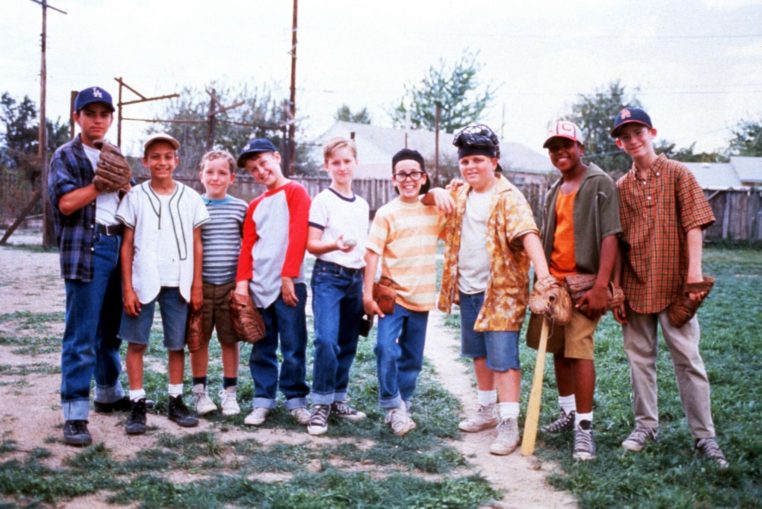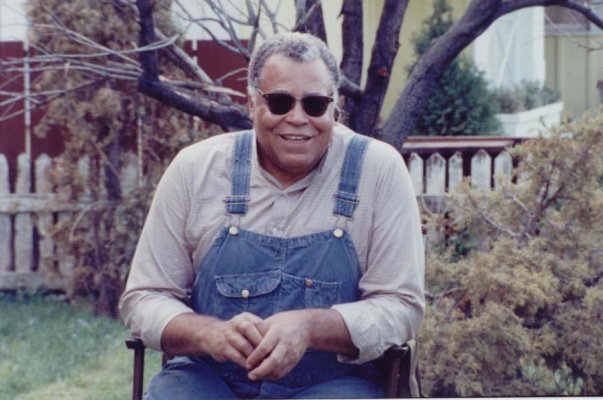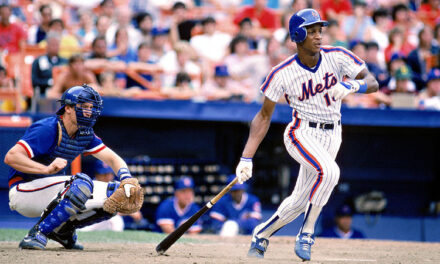
This year marks the 25th anniversary that The Sandlot, one of the most acclaimed and beloved baseball films ever made, was released in theaters.
The timeless classic of young Scotty Smalls moving into a new town where he befriends a local prodigy and his group of baseball-centric friends has continued to resonate with fans new and old.
From quotable lines to various merchandise emblazoned with memorable catchphrases, to social media GIFs, to Major League Baseball teams reenacting scenes, nary a day goes by where a reference to the 1993 coming-of-age film isn’t felt.
For director, writer and narrator of the film, David Mickey Evans, the level of appreciation and gratitude for The Sandlot truly never gets old.
Evans, 55, still remembers every moment of production from the film. After being replaced as director in the youth drama Radio Flyer, Evans quickly got to work on a new script which was first titled The Boys of Summer.
Inspired by actual events, Evans turned what was a trying time in his early childhood into a tale of what he had hoped his youth would’ve been like.
He replaced the antagonists in his real life, who wouldn’t allow Evans or his brother to play in local baseball games, into protagonists for the film.
Evans flipped what was a traumatic time in his life into one of bonding and friendship for the movie, where a group of eight boys helps the newcomer in town retrieve a prized autographed Babe Ruth baseball belonging to his step-father from a yard that housed the town’s local legend called The Beast.
The adulation for The Sandlot a quarter of a century after its release is not lost on Evans, who sincerely values and cherishes those who hold his film in such high regard. Evans speaks of the film like a proud parent and continues to be in awe of how the film has only continued to grow in popularity over time.
For the 25th anniversary, a special Collector’s Edition Blu-ray was released which includes a special set of Topps baseball cards along with a booklet and poster. The film is also being re-released in theaters at the end of July, which will also feature a sneak peek of an upcoming documentary on the making of the film.
Looking back over the last 25 years, Evans uses the word ‘mind-boggling’ to describe how The Sandlot has continued to stand the test of time. It seems fitting then to use one of the more memorable lines in the film to describe the status that this cult-classic has taken over the years: “Heroes get remembered but legends never die.”
Films like The Sandlot captivate audiences because they bring us back to our childhood; a time of innocence and fascination where the summer months were filled with bonding and trying to hold onto as much daylight as possible.
These films remind us that no matter what age we currently are, the inner child in us will revert back to those simpler times, forever cementing a special place in our psyche.
Legendary, indeed.
I had the privilege of speaking with Evans at the end of June, where we discussed the inspiration behind the film, the casting process, and many behind the scenes anecdotes.

MMO: Thank you very much for some time today, David. The Sandlot is one of my all-time favorite films, and it’s truly an honor to speak with you today.
When you look back and realize it’s been 25-years since The Sandlot was originally released in theaters, what thoughts come to mind? Do you still vividly remember all of the moments on set?
Evans: First of all, thank you very much. I appreciate those kind words you’ve said there. I never, ever, ever get tired of hearing them! It’s very humbling and I’m very grateful for them.
This has been a huge year for the movie. Major League Baseball, in conjunction with Fox Sports and 21st Century Fox, all got together and sent me and the boys [on tour]. We’re in the middle of it now and since March we’ve been going to baseball stadiums. There’s a museum installation of props and memorabilia from the film at the Louisville Slugger Museum. There’s a documentary that’s being edited right now that we shot over the last few months about the film, its cultural impact and its place in movie history and all of that sort of thing which is really cool. And it’s being re-released in July for a couple of days all over the country.
Getting a picture made is almost impossible. Getting a picture made and then making it the way that you want to and that you originally envisioned is doubly impossible. Getting through both of those and having a picture that people like and is popular is triply impossible. Then you get into cosmically astronomical forget it, it will never happen odds which becomes what they call an evergreen film. It stands the test of time and becomes subsequently more popular every year financially and every other way than it was the year before which The Sandlot has for literally a quarter of a century. It’s just mind-boggling to me!
I’m incredibly grateful that it’s into its probably three to three and a half-generation of fans. It’ll never get old because it’s sort of this moment stuck in time on film.
The other part of your question is, yes, I remember every single moment of every single day of shooting that picture. If you had the other guys from the cast members and most of the crew on the phone with me right now they’d tell you the same thing.
Certainly, it was the greatest movie-making summer of our lives, if not the greatest summer of our lives. It wasn’t an easy picture to make, but it was a lot of fun.
MMO: How long was the production time on the film?
Evans: I think our production schedule –not including pre-production- was forty-two days of filming.
MMO: Wow! That seems like a very limited amount of shooting time considering the length of the film.
Evans: Shooting schedules are purely a function of resources: money. You have X amount of money that buys you X amount of time. On that particular picture, I was very, very lucky because there are two ways to budget a movie. You either back the movie into the budget, or you create the budget around the needs of the film. For the most part – not all the way – we crafted and were fortunate enough to work the budget around the needs of the film.
These days, it’s mostly the other way around, which is the worst way to have to budget a picture. But that’s the reality of Hollywood.

MMO: I heard you speak in a previous interview that The Sandlot was inspired by the childhood you wished you would’ve had. Can you talk a bit about writing the script and the inspiration for the film?
Evans: My little brother and I grew up together in northeastern San Fernando Valley in the seventies in Southern California, and we were very poor. We moved into this block, this area and neighborhood in the middle of ‘white flight.’ We were just this Caucasian family that was moving into this very Chicano area.
There were other kids our age and maybe a little older on this block and maybe a block or so over. They didn’t like us and they beat us up. Our childhood was getting beat up at home, getting beat up on our way to school, getting beat up at school, getting beat up on the way home from school, and then getting beat up again at home. It was not fun, it was not fun at all.
These guys would play sports, basketball during basketball season and baseball during baseball season, out in the middle of the street. We didn’t really have any sandlot dirt areas, it was all concrete mass as Southern California is. We had parks and stuff like that where we’d occasionally go and play park league baseball. For the most part, these guys would play a game of baseball in the street and they would never let us play. It wasn’t even a matter of being the last guy picked, they just would never pick us.
One day, my brother went down there without me for some reason, as they were playing ball. They hit a ball over a concrete brick wall into a backyard of a house on this block where there was a vicious, ill-treated dog named Hercules, believe it or not. They were poor kids, too, and they had one baseball, not a bucket of balls. So if they hit it over there they had to go get it.
Nobody was going to go over there so they told my brother if you go get the ball we’ll let you play with us. He was so anxious and wanted to play so badly that he went over there and got the ball. As he was jumping back over the wall, the dog was on a chain and broke it, ripping his leg up pretty bad. They all laughed at him.
In a nutshell kind of way, I carried that memory and, obviously, many others, but that particular memory of all those ass***** into my adulthood. One day it occurred to me that I was giving them a lot of space that I should devote in my head to more positive thoughts.
As I remembered that and the incident, that was it, that just was a lighting moment for me. BOOM, that’s a movie! All the other stuff had to be invented, but that’s essentially how it happened.
MMO: You essentially turned what was a tough point in your life and the bullies you dealt with into heroes for your film. That had to be somewhat cathartic for you.
Evans: One-hundred percent. I could’ve written a movie about a bunch of bullies and a little kid getting beat up or getting bitten by a dog, but what’s the point of that? I don’t want to see that movie.
The other thing was, it was a bit of personal and cathartic as you can say about all authentic or honest writing. Any writer worth their salt is always in all your characters and stories. There’s a lot of me in there and I guess you can call it an act of forgiveness, I turned them all into heroes.
And now I don’t think about them anymore. [Laughs.]
MMO: What was the castings process like for you? Were there many difficult decisions on the right kid to portray the various roles?
Evans: Absolutely! I hate the casting process, Mathew, because I want to give the part to every actor that comes in. It’s an inconceivably difficult thing to do and almost an impossible thing to do well. The casting directors try real hard and they’re putting it out there, lowering all the walls and trying to get rid of the fear.
It took us months and months and months and months to cast the picture. Interestingly, I originally wrote it as the characters were nine and ten-years-old because that’s about how old my brother and I were when that incident happened. We actually cast the movie with kids that age and found a nice ensemble. But when we got them all together in a room for the first time and looked at them, I looked at Shari Rhodes – God rest her soul – the casting director and I said, ‘We can’t do this, they’re all babies. They look like babies.’
We had to go back to square one and cast for ages twelve to thirteen, and again, very difficult. You write these characters a certain way and you talk about twelve and thirteen-year-old young actors or kids that want to be in this movie, they’re not Robert De Niro or Daniel Day-Lewis. They’re not going to lose themselves in the role and take on all of those written characteristics. It becomes more of an issue of trying to find kids that are fearless or have very little fear in front of the camera; that are gregarious, outgoing, have unique personalities, and something about them.
In Mike Vitar’s (Benny) case, the second he walked into the room, this giant force field of charisma followed him. He was remarkably charismatic. I think I cast a couple of them as certain characters and then once we got them all in a room – this was after many, many months – I looked at them all and said, ‘Nope, this guy is not Yeah-Yeah, he needs to be Bertram. And Bertram needs to be Yeah-Yeah.’
We mixed and matched and eventually, it’s like all of the tumblers of a lock clicking, it opens up and you go, ‘That’s it, I’ve got it!’
MMO: Some might know that you also narrated the entire film. Was that your plan all along?
Evans: No, no, not at all. The actor who played the older Scotty Smalls in the film is an actor named Arliss Howard. He’s a terrific guy. A terrific actor, he’s been in tons of films, really, really good.
Arliss has a bit of a southern drawl, and the character Scotty – who was never intended to come from the south – Tom Guiry, was cast as Scotty and was actually from where you are: New Jersey. He’s got a very prominent Jersey accent, so we had to work on that to get rid of that a little bit and make it more of middle-America.
When we went to lay down narration with Arliss, it just wasn’t happening, he sounded Southern. We sort of amicably parted ways and my editor and I sat there and said, “Now what are we going to do?”
And Mike Stevenson – my editor – goes, “You go do it.”
I said, ‘Me?’
He said, “Yeah, you wrote it, you know it, you know how to say it. Go say it.”
What we ended up doing was I went in and laid stuff down and then we went back and, during the mixing of the movie, had pitched Arliss’ voice up and down a little bit to match my voice.

MMO: Do you have a favorite scene from the film?
Evans: My personal favorite scene is the night game, with all the fireworks and Ray Charles singing “America the Beautiful.” And again, I like to put it this way, I needed an ideographically American scene. This movie’s been called actually the most American film ever made, as well as all of these other accolades. I think it’s because of that scene, mostly.
So I wrote that and there’s a story that they tell – I think it’s true – where Walt Disney had just finished Disneyland. Of course, if you’ve ever been there, he has Main Street, USA, as the wonderful entrance into the Magic Kingdom. It’s this scale reproduction of what was essentially supposed to be Marceline, Missouri’s Main Street, from the 1800s to the early 1900s.
When it opened in 1955, people from all over the world obviously wanted to come, especially the heads of state, prime ministers and kings and queens. I think the only person that didn’t get to go was [Nikita] Khrushchev, because the state department wouldn’t guarantee his safety.
I can’t remember what head of state it was but Disney would give private tours and they were walking down Main Street and the guy says, “Wow, Mr. Disney, you nailed it. This is exactly the way it was.”
And Disney goes, “No, it’s not. It’s the way it should’ve been.”
The whole movie is like that for me. But that scene, in particular, is very much like that.
MMO: The film is considered one of the best baseball movies of all-time. Though, in an interview I heard you give, you said that you would describe the film as one of childhood and friendship before baseball. Can you talk a little about how you view the film?
Evans: It’s first and foremost a movie about friendship. It’s all of these kids and they’re still walking in childhood, but they’re on the verge of adulthood and of getting out of adolescence and into their teenage years. There’s always that moment somewhere around the ages of 12 to 14, well, it used to be anyway. That’s why when they see the beast it looks like a [Ray] Harryhausen film with puppets and all that sort of thing. It’s supposed to be because that’s what they have in their heads.
They’ve still got both feet firmly anchored in childhood and that imaginative time and world. That fence – Mr. Mertle’s fence – is metaphorically the dividing line between adolescence and adulthood. When Benny jumps over [to retrieve the Babe Ruth autographed baseball] there, he’s jumping into responsibility, obligation, and that sort of thing. That was the thematic stuff that I was dealing with.
I think the reason it’s called the greatest baseball movie ever made is because baseball’s not handled as just a game. I think the narrator said something like, “It’s an endless dream game,” like their own little Camelot. It’s a perfected version of America’s game. There’s not that much baseball in the movie really if you think about it, but there’s enough to get the point across.

MMO: You brought up Mr. Mertle, who was played by the great James Earl Jones. You had him on set for just one day. What was he like to work with?
Evans: He’s like the greatest actor you’ll ever work with. First of all, he’s the most generous and gregarious person, I just can’t say enough good things about the man. He showed up on set and I had him for one day and he’s the kind of actor that comes one-hundred percent prepared. He’s ready to go, you give him a minute, you say action, he does it, it’s perfect, and then you cut.
Even today, 25 or 26 years into this career that I’ve had, if I got the great fortune to work with him again, what am I’m going to tell the guy? Nothing. [Laughs.] It’s just like, he’s James Earl Jones, he’s arguably the greatest actor of his generation and definitely one of the greatest actors of all-time.
We had a few conversations on the phone before he flew out and he processed all of that stuff. He came prepared and ready and he was Mr. Mertle and that was it.
MMO: What was the most challenging scene to film?
Evans: The chase at the end was challenging because we had to shoot it over like a whole week and it was very, very hot in Salt Lake City where we shot the film. That summer had a massive heatwave.
I think we had four or five English mastiffs and they don’t like to run, they like to lay in air conditioning and be sweet big dogs. It was tough to deal with them because you get forty yards out of a run and then they have to go in the air-conditioned van and get hosed down; they were treated like kings and queens, of course. But it just took a long time to do that.
Shooting the pool scene was tough as well, because we shot at that pool for maybe two or three days. Of all the days during the summer that were 110-112 degrees, those days it was like 50 degrees! It wasn’t a heated pool and the guys could get in there for five minutes and they would have to get out and warm up. It was exactly the opposite and that took forever, but it worked out though.
MMO: Growing up, who were some of the directors that you idolized that made you want to get into this business?
Evans: When I was a kid I don’t think I knew who Alfred Hitchcock was and all of that sort of thing. My favorite films when I was a kid were the Ray Harryhausen films; those were just fascinating to me with all of the dioramas and stop motion animation like The 7th Voyage of Sinbad, The Golden Voyage of Sinbad, and of course, all of the Disney films.
Then in my adolescence, I went and saw Star Wars for the first time. I think I sat in that theater and watched it three or four times in a row. I was just so blown away that I didn’t know what that was, how they did it. But that was the moment that pretty much sealed my fate. I knew that I wanted to do that.
Then I went to film school and [François] Truffaut, [Jean-Luc] Godard, Billy Wilder, Buster Keaton and Charlie Chaplin [I liked]. And then later, [Steven] Spielberg when I was in high school and when I was in college he was coming into his own.
MMO: Do you have any upcoming projects that fans can be on the lookout for?
Evans: I’ve got a little league baseball story based on a short story called Junior Americans that I’m going to do. I’ve got a picture that’s an homage to The Breakfast Club set in present-day, called The Class.
It looks like there’s going to be a Sandlot prequel that I’m going to do. We’re making a deal right now so I’ve to write it and get it approved and all of that. So who knows? It could be as early as next year sometime, if things go quickly. Which, it’s Hollywood, they never go quickly. [Laughs.]
MMO: You must run into many fans who recite some of The Sandlot’s most quotable lines, not to mention see all of the merchandise like the t-shirts with Ham on it which reads, “You’re killing me, Smalls.” Is it still surreal to see how much your film has made an impact on people?
Evans: First thing that it means to me is that every contract for a film that I write or make, I’m going to get some merchandising rights in there! [Laughs.] I didn’t have them on The Sandlot. There are maybe ten guys in the world who get to share that: Spielberg, Lucas, and that’s about it.
The big story about Star Wars was they forced Lucas to shoot it and they cut a bunch of time off of it, and he had to finish it within a week. So Lucas said, “Sure, I’ll do it if you give me all the merchandising rights.”
They did and that was the last time that ever happened in ’76 or ’77.
I see them all the time. I don’t think there’s a single day that goes by where I don’t see either someone out in the world or definitely on social media. I think the “You’re killing me Smalls” with the picture of Ham is – somebody on the net did some type of search – and figured it out somehow that it’s literally the most popular t-shirt from a movie of all-time.
MMO: Is “You’re killing me Smalls” your favorite line from the film?
Evans: I love that one, that’s a terrific line. That line’s popularity owes as much to Pat Renna (Ham) and the way that he delivered it many times in the film as it does to me having written it.
My favorite is without question, “Heroes get remembered, but legends never die.”
MMO: I can’t thank you enough for some time to look back on 25-years of The Sandlot, David. It was a pleasure to speak with you.
Evans: I appreciate that very much, Mathew. I enjoyed it very much.
Follow David Mickey Evans on Twitter, @DMESandlot
Check out his blog, here.















